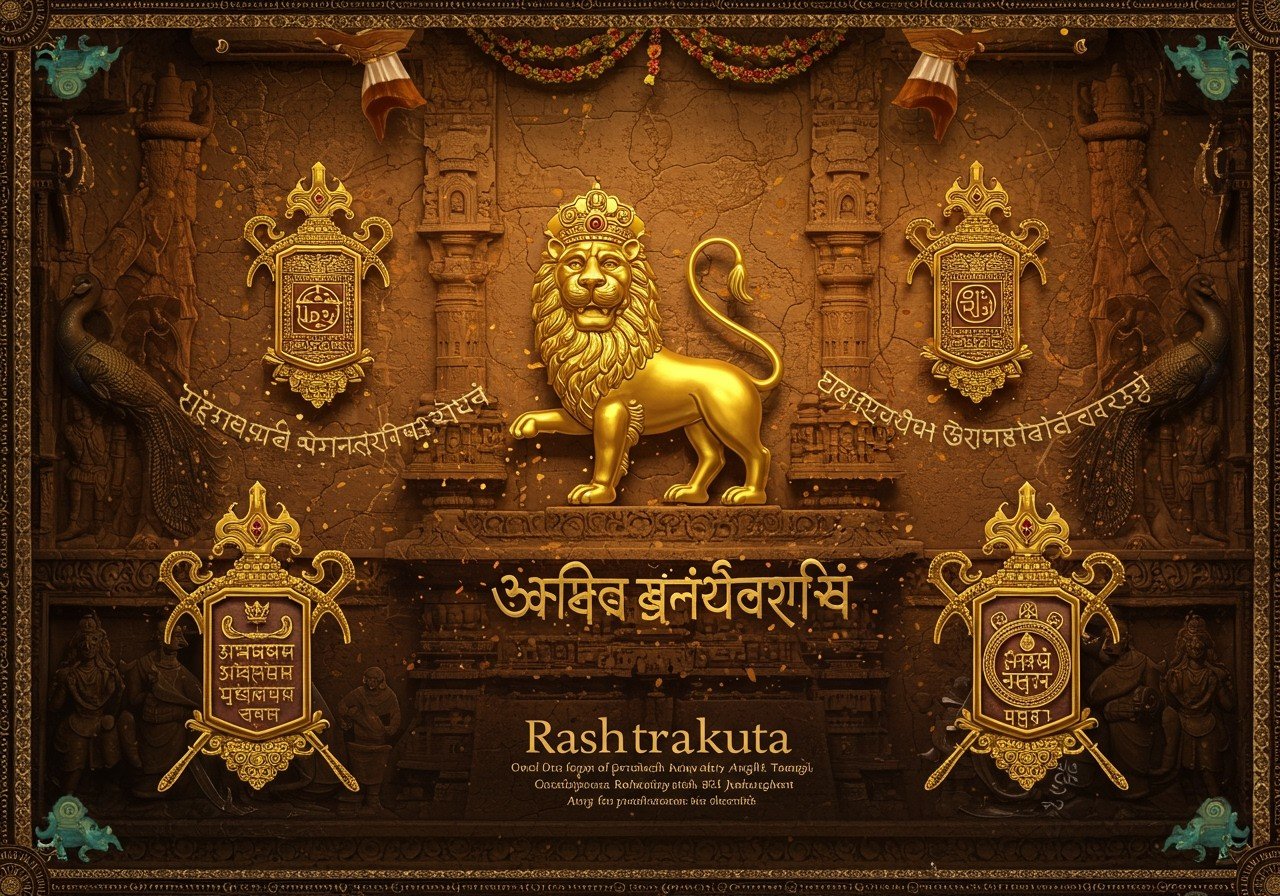
The Rashtrakuta Dynasty, a powerful empire in Indian history (circa 753 CE to 975 CE), left a rich legacy of art, culture, and symbolism. Understanding these symbols offers a deeper appreciation of the dynasty’s contributions to Indian heritage. Let’s explore the significance of Rashtrakuta symbols and emblems, including their historical context, design elements, and cultural importance.
Historical Background of the Rashtrakuta Dynasty
The Rashtrakutas ruled a significant portion of the Indian subcontinent, particularly the Deccan region, between the 6th and 10th centuries. Known for their military strength, efficient administration, and patronage of the arts, they established their capital at Manyakheta. Their reign witnessed the creation of architectural marvels like the Kailasa temple at Ellora. To fully grasp their symbolism, understanding this historical context is crucial.
Key Symbols of the Rashtrakuta Dynasty
The Rashtrakutas employed various symbols to represent their power, religious beliefs, and cultural values:
- Golden Eagle (Garuda): This served as their royal emblem, symbolizing vision, strength, and authority. The Golden Eagle was a powerful symbol of the Rashtrakutas’ dominion and imperial aspirations.
- Boar (Varaha): Associated with Vishnu, the preserver god in Hinduism, the boar symbolized strength, protection, and divine intervention. It represented the dynasty’s connection to Hindu traditions.
- Lotus: Representing purity, beauty, and spiritual enlightenment, the lotus is a sacred symbol in Hinduism and Buddhism. Its presence in Rashtrakuta symbolism suggests a focus on spiritual growth and purity.
- Lion: A universal symbol of royalty, courage, and strength, the lion’s image conveyed the Rashtrakutas’ power and regal status. It emphasized their dominance and military might.
These symbols featured prominently in Rashtrakuta emblems, showcasing their cultural and religious significance.
Rashtrakuta Dynasty Emblems
Rashtrakuta emblems were intricate and layered with meaning, often combining animals, geometric patterns, and religious motifs. Govinda III, a prominent Rashtrakuta ruler, even incorporated symbols of the sacred rivers Ganga and Yamuna into the royal emblem, further enriching its significance.
Examples of emblem designs include:
- Lotus at the Center: A central lotus, often surrounded by mythical creatures like lions or elephants, symbolized purity and spiritual growth within a framework of power and protection.
- Religious Symbols: The incorporation of religious symbols like the trident (trishula) or the conch (shankha) underscored the dynasty’s devotion to Hindu deities and religious practices.
These emblems were not merely decorative; they conveyed messages of power, divinity, and royal authority.
Rashtrakuta Dynasty Flag
The Rashtrakuta Dynasty flag, a key emblem of authority and identity, often displayed symbols such as the Golden Eagle, Boar, Lion, and Lotus. These symbols reflected the dynasty’s religious affiliations and royal status. Flown during ceremonies, battles, and public events, the flag served as a powerful visual representation of Rashtrakuta dominance and cultural heritage.
Artistic and Cultural Impact of Rashtrakuta Symbolism
Rashtrakuta symbols significantly influenced the art and culture of their time, inspiring various artistic expressions, including temple architecture, sculpture, and painting. The intricate designs of Rashtrakuta emblems are evident in the detailed carvings of the Kailasa temple and other monuments. These symbols also played a role in performance arts like dance and drama, where stories and themes related to the dynasty’s history and mythology were conveyed. For those with cultural roots in India, understanding these symbols is a way to connect with their heritage. The legacy of Rashtrakuta symbols continues to resonate today, providing insights for historians and inspiration for contemporary artists.
Poojn.in: Connecting to Rashtrakuta Heritage
Poojn.in, India’s leading online store for cultural and religious goods, offers a wide selection of products that resonate with the rich traditions of the Rashtrakuta Dynasty. Explore our collection of sacred malas, deities, and other puja items, crafted with the same reverence and attention to detail that characterized the Rashtrakuta era. Discover how you can connect with your heritage through our authentic and carefully curated offerings. For a deeper understanding of related rituals and traditions, explore our informative blogs on sacred symbols and ancient rituals.
Conclusion
The Rashtrakuta Dynasty’s symbols and emblems provide a fascinating glimpse into the rich cultural tapestry of ancient India. These symbols are a testament to the dynasty’s lasting impact on Indian heritage. By exploring and understanding them, we connect with our past and appreciate the traditions that have shaped our identity.
FAQs on Rashtrakuta Dynasty Symbolism
What is the primary symbol of the Rashtrakuta Dynasty? The Golden Eagle (Garuda) is considered the primary symbol, representing power and sovereignty.
What did the Rashtrakuta emblem typically depict? The emblem often featured a stylized eagle, sometimes accompanied by the sun and moon, symbolizing divine protection and royal authority.
Where can one find examples of Rashtrakuta symbols today? Ancient inscriptions, temple carvings, and coins from the Rashtrakuta era, particularly in regions they ruled, showcase these symbols.
How did the Rashtrakutas utilize their emblems? Emblems were used on official documents, flags, and coins to assert authority and legitimacy.


